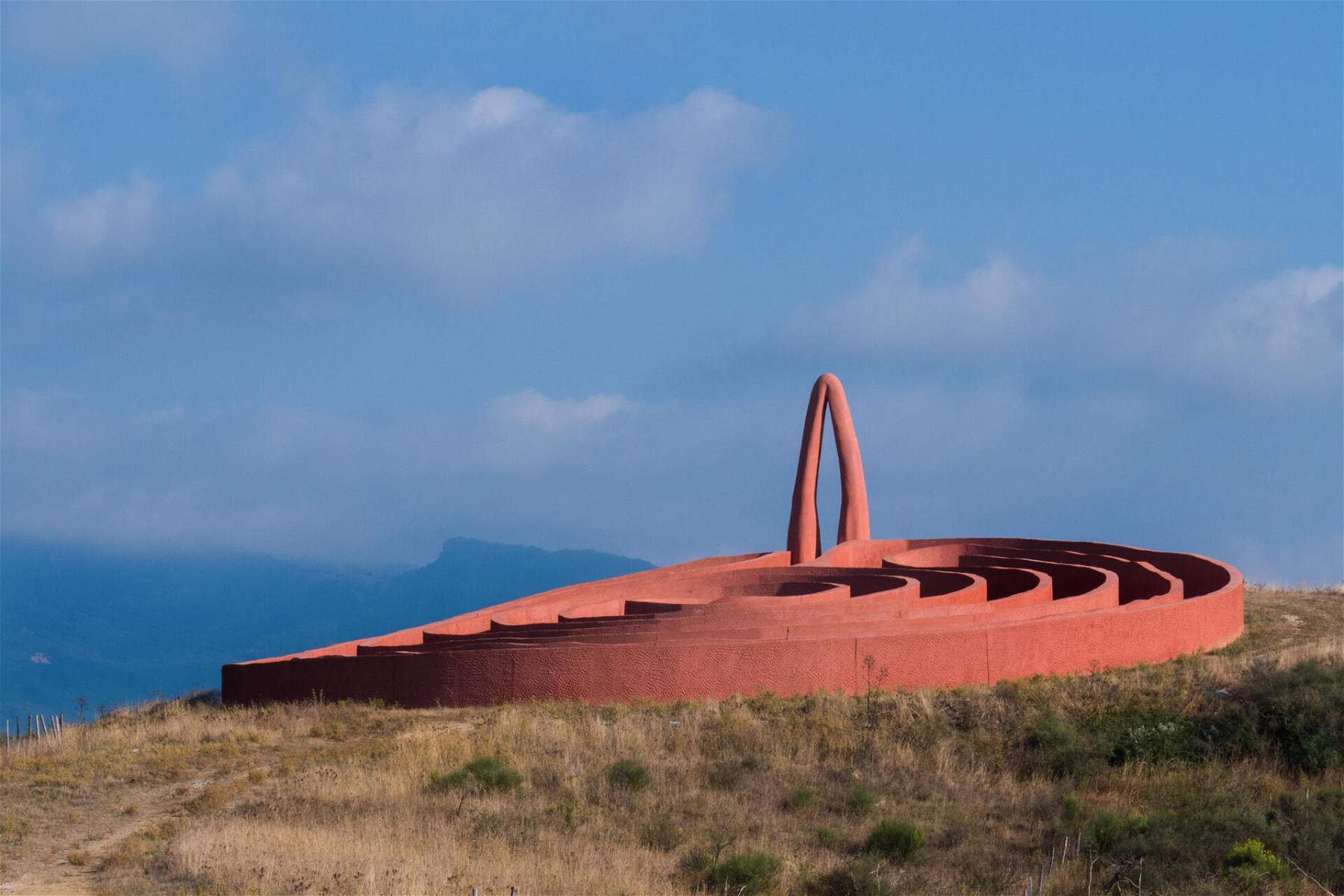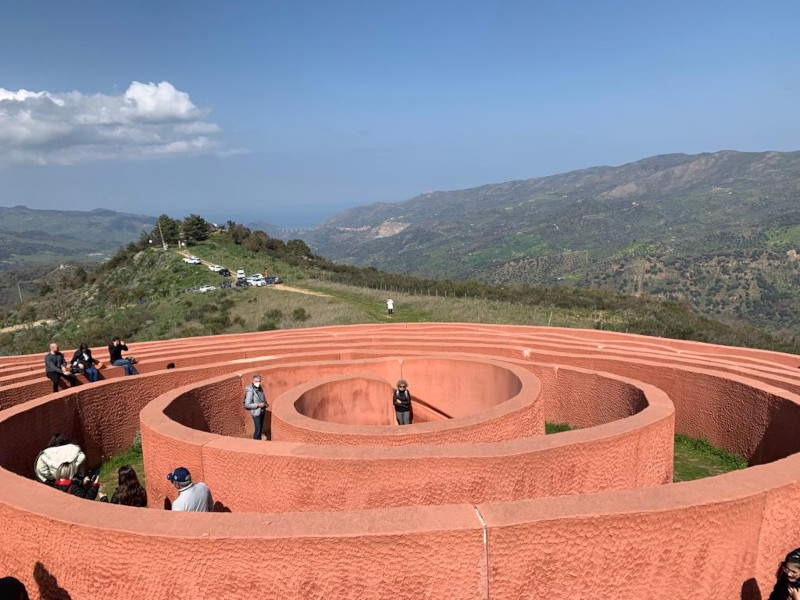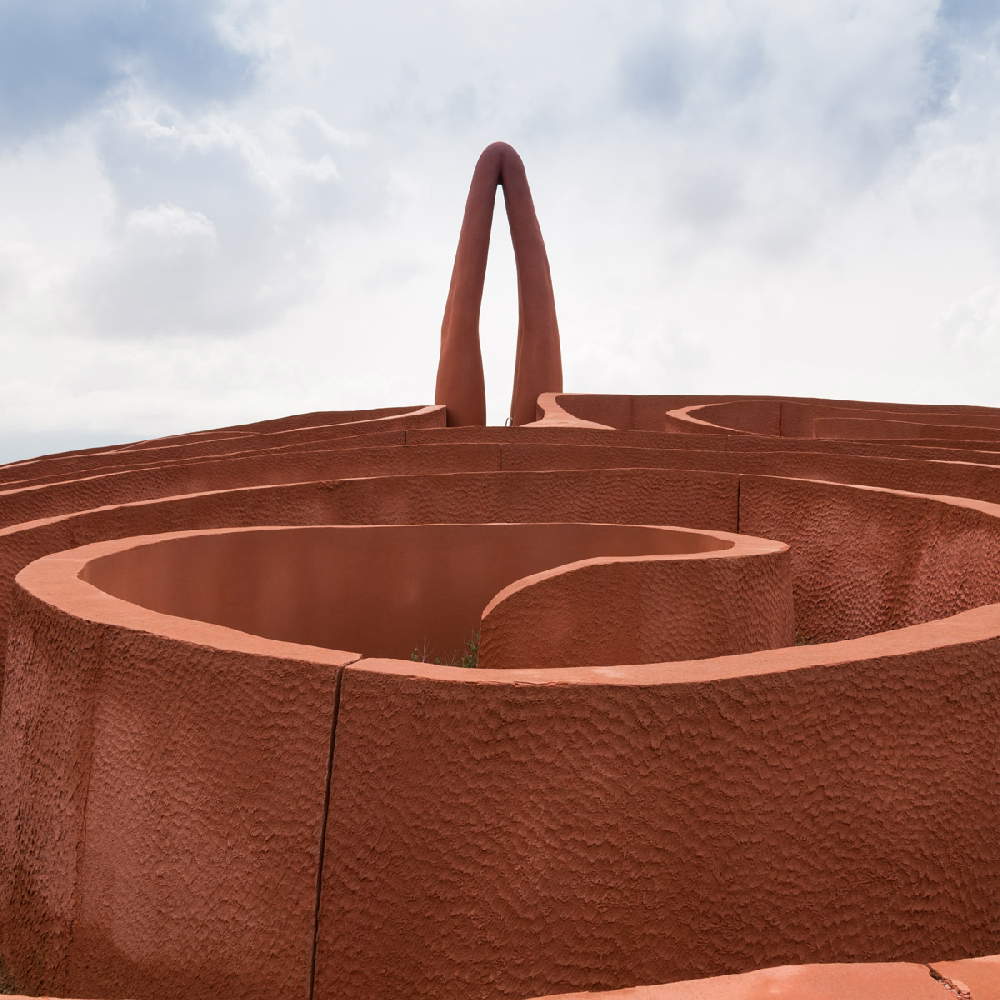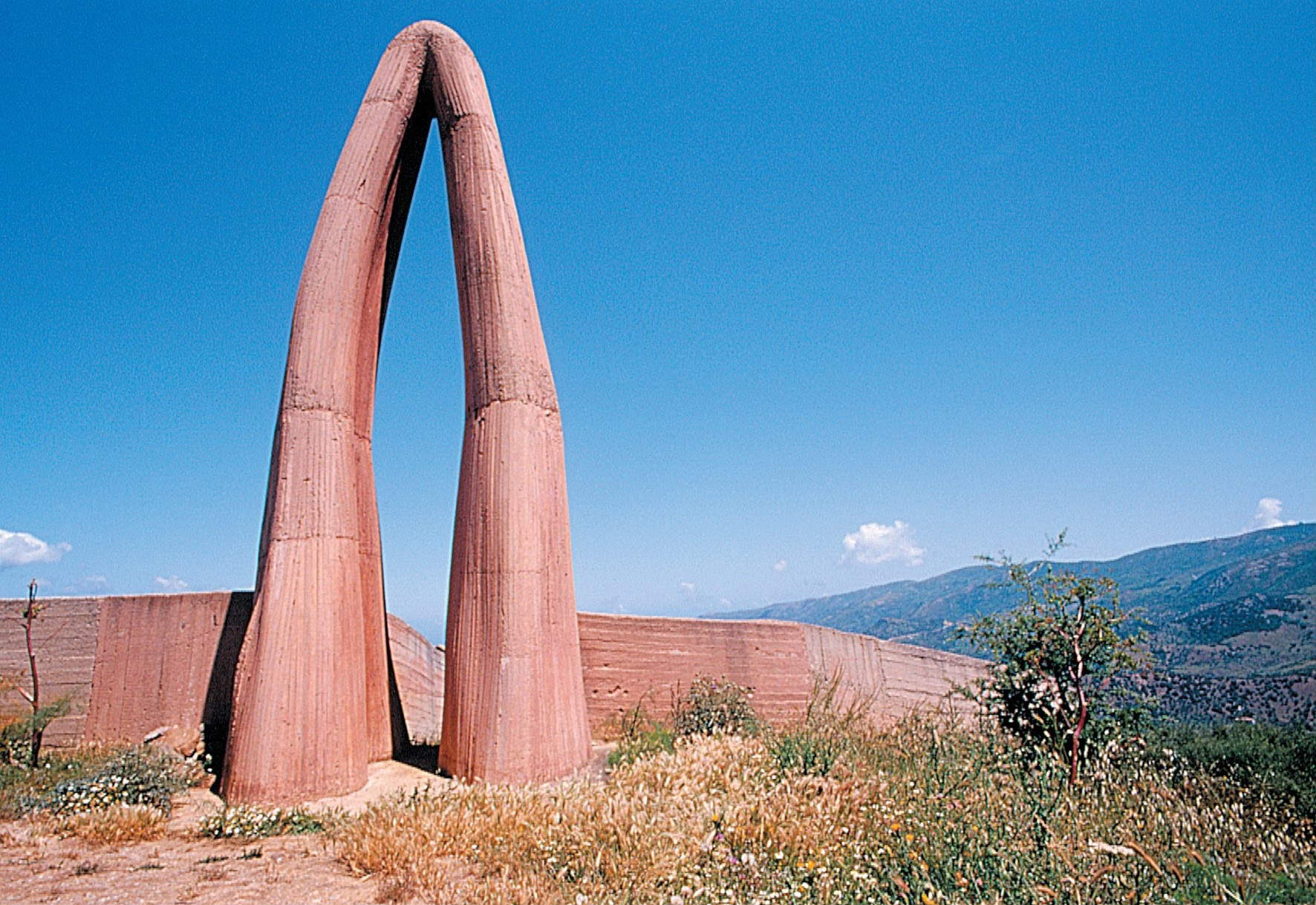Castel di Lucio is a small town of just over 1,000 inhabitants, located 753 meters above sea level, nestled in the woods of the Nebrodi Mountains, a short distance from the northern coast of Sicily. The capital, Messina, is more than two hours’ drive from here; Castel di Lucio is the farthest town in the province. Yet for some years now, its name has resonated withcontemporary art lovers: it was here, that in 1986, entrepreneur Antonio Presti (Messina, 1957) started one of Italy’s most visionary contemporary art parks, Fiumara d’Arte. It all began in 1982, when Presti, then a very young patron of the arts, just 25 years old, inherited the family business from his father and, in memory of his parent, commissioned Pietro Consagra (Mazara del Vallo, 1920 - Milan, 2005) to create a large outdoor sculpture, The Matter Might Not Be There, to be placed in the bed (“fiumara,” in these parts) of the Tusa River.
The work was completed in 1986, and once finished Presti had the idea of having others made to follow up on an outdoor contemporary art park: between Land Art interventions and sculptures installed in the landscape, Fiumara d’Arte was thus born. Which today has works by many of the leading exponents of environmental art: the large window to the sea in Tano Festa ’s Monument to a Dead Poet (1989), Mauro Staccioli ’s enormous 38th Parallel pyramid (2010), and Hidetoshi Nagasawa ’s underground Golden Boat Room (1989), which was photographed only at the inauguration and cannot be opened until his 100th birthday. However, the most famous, most photographed, and perhaps most sought-after work in this extraordinary collection of open-air contemporary art is the Labyrinth of Ariadne by Italo Lanfredini (Sabbioneta, 1948), a work created between 1988 and 1989, and opened in 1990.





The Mantuan artist’s hypnotic labyrinth immediately became a classic of Italian Land Art, often cited along with Alberto Burri’s Great Cretto of Gibellina (another celebrated symbol of environmental art in Sicily), or Mimmo Paladino’s Salt Mountain also located in Gibellina, or even the works of the aforementioned Mauro Staccioli that dot the hills around Volterra. It is a work made of concrete painted with the colors of terracotta, to recall one of the typical materials of Lanfredini’s practice, and installed on the top of a hill, accessible every day of the year, at any time of day or night, without entrance fees. One arrives and enters.
The course and shape, with two-meter-high walls that thus guarantee the full involvement of those who walk through it, are quite unusual for a labyrinth : the Labyrinth of Ariadne is in fact a spiral that unfolds irregularly. Just like a thread, the one Ariadne gave to Theseus so that he would not get lost in the labyrinth of the Minotaur. A narrow ogival arch, a symbol of Mother Earth in that it unmistakably resembles a female genital organ, marks the entrance to the labyrinth, which unfolds in sinuous spirals to the center, following a compulsory path, where it is impossible to get lost, because there are no dead ends, no pitfalls, no passages that lead back to one’s steps. There is, if anything, an invitation to travel to the center, to the small olive tree that symbolizes wisdom and knowledge, since in Greek culture it was sacred tree of the goddess Athena, a deity associated with wisdom. All of this follows a unique path, if one evaluates it on a mere physical level: in reality, each visitor who enters the maze has his or her own rhythms, looks up or looks down, stops to reason, with the consequence that the paths become infinite. Even what Lanfredini suggests with his labyrinth is, in fact, an exploration.
There is, at the basis of Ariadne’s Labyrinth, the idea that a labyrinth is not only a path that occurs in a given place, but also an inner path. In a labyrinth one tends to think, if only to try to figure out how to find the exit. And, not finding it, it happens that one has to stop and think. The mind, at that point, begins to travel. Here, then, Lanfredini’s labyrinth wants to pose itself, specifically, as an exploration of the depths of one’s self, a journey in search of the origins of existence, a major theme of the artist’s research in the 1980s.




At that time, especially with his terracotta works, Lanfredini was developing his ideas around the union of man and woman, which is why his works often took phallic forms combined with vaginal features, or the motif of concentric circles, an archetypal symbol of the cycle of life, recurred in the production of those years. These suggestions contributed to the birth of Ariadne’s Labyrinth. It was critic Giorgio Di Genova who suggested Lanfredini’s name, choosing the very sketch of the labyrinth, to the international commission that was evaluating artists to be assigned a new project for Fiumara d’Arte. Di Genova would later concisely but eloquently recall the reasons for his choice: “to cross the vaginal threshold, to go through Ariadne’s labyrinth to the center, in which was a small cave with water and a green branch, and to go back up to exit through the same threshold, was a rather perturbing psychological experience of the ego.” And Lanfredini himself would provide a description of his work along these lines. Referring to the place, silent and pristine, where Ariadne’s Labyrinth had sprung up, the artist would write, “It is in this subliminal setting, and also because of Presti’s precious sensibility and rare intelligence, that my idea materializes. It is at the top of this great receptacle place of ’fertilizing transformations’ that the journey beyond the ’Threshold’ departs, toward the unknown , toward an ancient-new archetypal symbol, toward an underground mystery. Into a womb where one can lose oneself and find oneself. Not a ’cosmetic’ sculpture operation on the territory but a microcosm in the macrocosm, viscera in the viscera. A memory, a trace that sinks and founds itself in the landscape with the awareness of, as Calvino says, ’not expecting to reach a beyond but a hereafter.... Ourselves.”
For these reasons the Labyrinth of Ariadne, with its sinuous forms that welcome the visitor just as a mother welcomes a child into her womb, with its references to the ancient cultures that have shaped the land of Sicily, recalls the theme of motherhood. For these reasons, the labyrinth, the silent place in which it is immersed, and its continuous and fruitful dialogue with its surroundings are connoted by a strong sense of solemnity, almost spiritual. Therefore, when one finishes the journey, it will seem as if one has embarked on a journey to a primal purity, a journey to one’s origins, a journey within oneself.
 |
| Ariadne's Labyrinth, a journey to the origins of life in the heart of the Nebrodi Mountains in Sicily |
Warning: the translation into English of the original Italian article was created using automatic tools. We undertake to review all articles, but we do not guarantee the total absence of inaccuracies in the translation due to the program. You can find the original by clicking on the ITA button. If you find any mistake,please contact us.